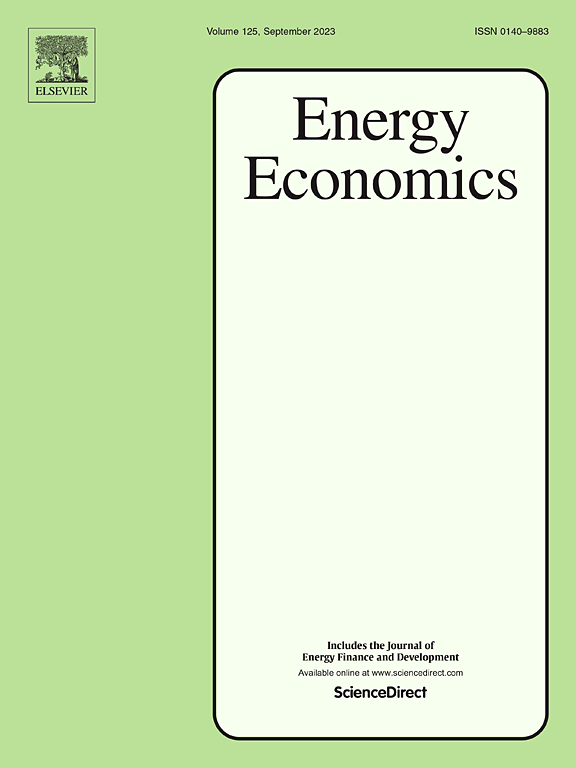对标印度配电公司绩效:多阶段稳健DEA和SFA模型的应用
IF 14.2
2区 经济学
Q1 ECONOMICS
引用次数: 0
摘要
在规制价格上限垄断市场时,配电公司的效率措施和基准是至关重要的。基准方法为机构提供必要的信息,以根据绩效提供激励或惩罚。本研究采用多阶段参数(SFA)和非参数(DEA)方法对2015-16年至2022-23年印度DISCOMs的绩效进行了基准测试。DEA分析包括SBM DEA、bootstrap DEA和面板Malmquist DEA模型,用于评估效率随时间的变化。参数分析涉及三代时变面板数据随机效应SFA模型。这些模型分别是第一代随机效应(RE)、第二代真随机效应(TRE)和一种先进的四组分模型,该模型分解了持续效率和瞬态效率,并使用蒙特卡罗模拟对分析进行了鲁棒化。研究结果表明,短期效率低下对整体效率低下的贡献大于持续效率低下。结果表明,短期的政府政策和监管变化比内部管理变化更能有效地提高DISCOMs的绩效。该研究得出结论,稳定的监管环境、公平的关税结构、市场竞争和补贴政策对提高印度discom的效率至关重要。这些发现对制定政策和管理战略以提高表现不佳的discom的绩效具有重要作用。本文章由计算机程序翻译,如有差异,请以英文原文为准。
Benchmarking the performance of Indian electricity distribution companies: The applications of multi-stage robust DEA and SFA models
Efficiency measures and benchmarking of Electricity Distribution Companies (DISCOMs) are crucial in price-cap monopoly market regulations. Benchmarking methods provide the necessary information for institutions to provide incentives or penalize based on performance. This study applies multi-stage parametric (SFA) and non-parametric (DEA) methods to benchmark the performance of Indian DISCOMs from 2015-16 to 2022–23. The DEA analysis includes SBM DEA, bootstrap DEA, and the panel Malmquist DEA model, which assesses efficiency changes over time. The parametric analysis involves three generations of time-varying panel data random effect SFA models. These models are first generational Random Effect (RE), second generational True Random Effect (TRE), and an advanced four-component model which decomposes persistent and transient efficiency and uses Monte Carlo Simulation to robust the analysis. The results indicate that transient inefficiency contributes more than persistent inefficiency to overall inefficiency. Results suggest that short-term government policies and regulatory changes will enhance the DISCOMs' performance more effectively than internal managerial changes. The study concludes that a stable regulatory environment, fair tariff structures, market competition, and subsidy policy are crucial for enhancing the efficiency of Indian DISCOMs. These findings have a significant role in developing policies and managerial strategies to enhance the performance of underperforming DISCOMs.
求助全文
通过发布文献求助,成功后即可免费获取论文全文。
去求助
来源期刊

Energy Economics
ECONOMICS-
CiteScore
18.60
自引率
12.50%
发文量
524
期刊介绍:
Energy Economics is a field journal that focuses on energy economics and energy finance. It covers various themes including the exploitation, conversion, and use of energy, markets for energy commodities and derivatives, regulation and taxation, forecasting, environment and climate, international trade, development, and monetary policy. The journal welcomes contributions that utilize diverse methods such as experiments, surveys, econometrics, decomposition, simulation models, equilibrium models, optimization models, and analytical models. It publishes a combination of papers employing different methods to explore a wide range of topics. The journal's replication policy encourages the submission of replication studies, wherein researchers reproduce and extend the key results of original studies while explaining any differences. Energy Economics is indexed and abstracted in several databases including Environmental Abstracts, Fuel and Energy Abstracts, Social Sciences Citation Index, GEOBASE, Social & Behavioral Sciences, Journal of Economic Literature, INSPEC, and more.
 求助内容:
求助内容: 应助结果提醒方式:
应助结果提醒方式:


